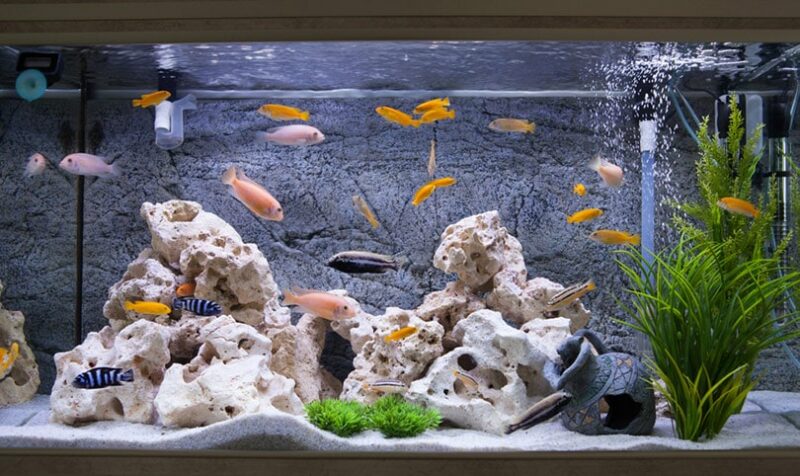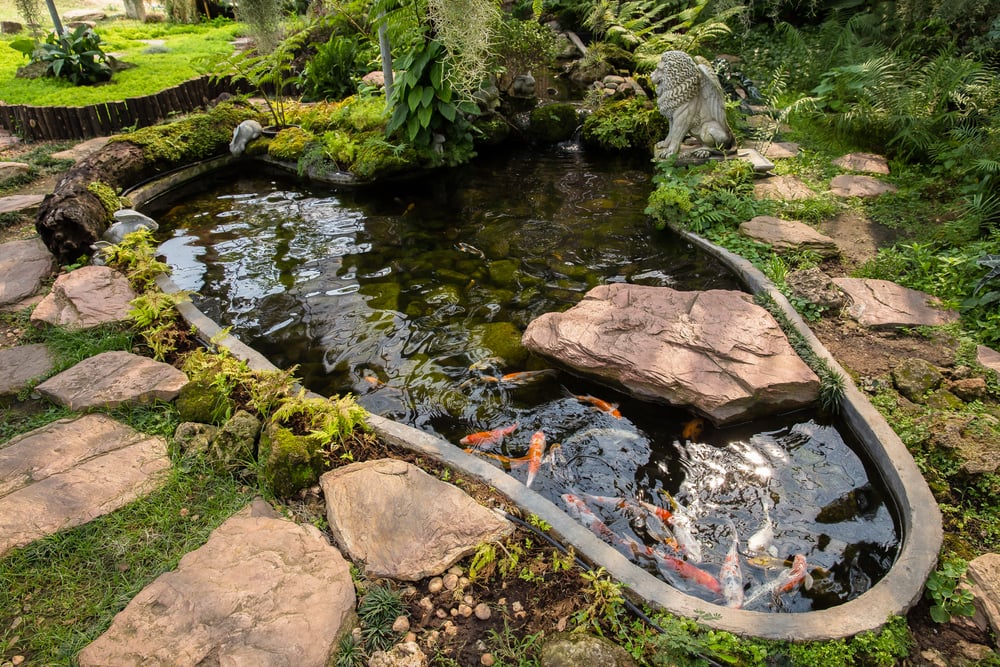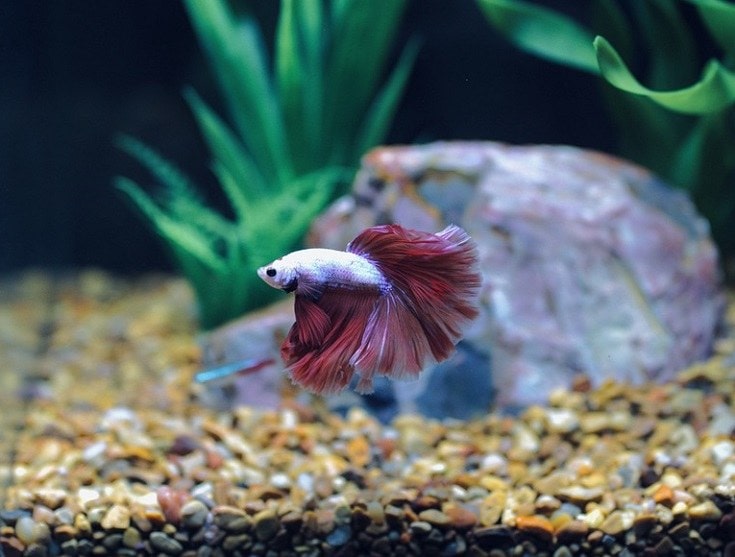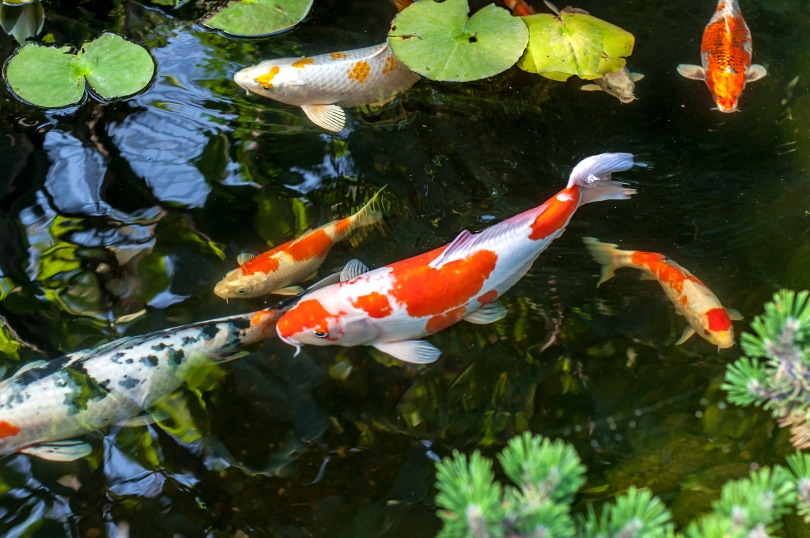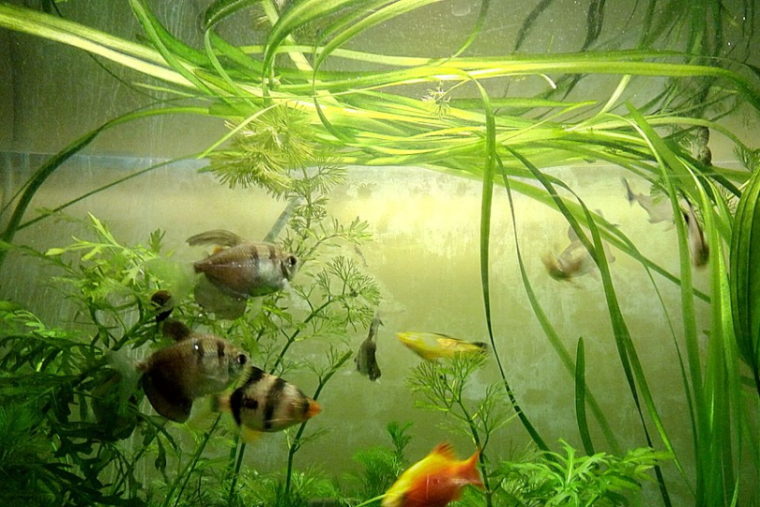
If you’ve been looking for a simple aquatic plant to get you started on your aquarium adventures, you should look at Vallisneria. It’s one of the easiest plants to grow and maintain, making it perfect for first-time aquarium owners.
The Vallisneria comes in several varieties, all of which grow fairly tall and provide a host of benefits to aquarium dwellers. Plus, it adds a nice bright color to your tank.
Here’s everything you need to know about planting and taking care of this lovely aquatic plant!
Useful Information About Vallisneria
| Family Name: | Hydrocharitaceae |
| Common Name: | Vallisneria, Val, Eelgrass, Tape Grass, Jungle Val |
| Origin: | Africa, North America, South America, Asia, Australia, Europe |
| Color: | Green |
| Size: | 8 inches to 6 feet |
| Growth Rate: | Moderate to fast |
| Care Level: | Easy |
| Lighting: | Low-high to medium |
| Water Conditions: | Temp: 59 – 82℉
pH: 6.0 – 9.0 |
| Minimum Tank Size: | 10 gallons |
| Supplements: | None |
| Placement: | Background |
| Propagation: | Runners |
| Compatibility: | Temperate to tropical freshwater tanks |
Vallisneria Appearance
Vallisneria is a tall aquatic plant that has an appearance like grass. Because there are different varieties of Vallisneria, the height of the plant will vary but can range from 8 inches to 6 feet. The leaves of this plant will also vary depending on the type but will be either twisted, spiraled, or straight in shape. They may also be up to 1 inch across or extremely narrow. However, all varieties of Vallisneria will have rounded tips and tiny spines on the leaf margins.
Vallisneria is green (though leaves can turn brown or red, depending on the variety and care of the plant) and grows upward to the surface of the water. If they grow tall enough to reach out of the water, the female Vallisneria can produce flowers and seeds. This depends on whether the plant has been pollinated, of course, but when pollinated, the female can produce flowers that are pinkish, white, or green. Seed pods will be tall with many tiny, rounded seeds covering them. Male Vallisneria will simply break off and float on the water.
Where to Find It?
Vallisneria is an extremely common plant used in aquariums, so you shouldn’t have any problems finding any. You can locate them in your local fish and aquarium store or pet store or find them online at pet stores, specialty stores, and even Amazon. Just be careful when purchasing because, occasionally, plants may be mislabeled, and you might get another plant entirely.
General Care
Vallisneria is an extremely easy aquatic plant to care for (so long as they’re placed in a suitable environment). They don’t require supplementation; they simply absorb the nutrients they need from the water. And they can grow incredibly fast, so you’ll likely need to trim them back often. That means investing in a good pair of aquascaping scissors to deal with them—a straight pair and a curved pair will be your best bet.
You’ll also find there are so many varieties of Vallisneria from which to choose. The ones most commonly included in aquariums are:
Habitat, Tank Conditions & Setup
To properly grow Vallisneria, you’ll need to know the kind of habitat it thrives in and the tank conditions it needs.
Tank/Aquarium Size
As we said previously, Vallisneria tends to grow large and can easily overtake a tank. That means they do better in larger tanks. They can grow in tanks as small as 10-gallons, though that would require planting a dwarf variety of Vallisneria (and even then, you’d need to prune every once in a while so things don’t get out of hand).
Water Temp & pH
While Vallisneria can grow in temperatures ranging from 59-86℉, they will thrive best in water that is between 64-82℉. When it comes to the optimal pH of a tank, shoot for between 6.5 and 8.5, as this plant doesn’t do well in conditions that are overly acidic.
Substrate
Vallisneria is such an easy aquarium plant that it will grow in pretty much any substrate (so long as fish produce enough waste). That includes sand and gravel (and sand will slow down the spread of the plant as it makes it harder to spread roots). However, if fish aren’t producing enough waste, your Vallisneria will need a substrate that is nutrient-rich as it is a root feeder (or you’ll need to add fertilizer).
Plants
This plant will do fine with other plants, so long as you remember that Vallisneria is a spreader and will take up a lot of space. That means smaller plants in the foreground might be a better pick to go along with this one.
Lighting
Though Vallisneria is often recommended for low-light tanks, their optimal lighting is the moderate-high lighting range. They will survive in lower light, but they won’t do as well. Moderate lighting is ideal, but high lighting can help the plant maintain the color of their leaves (though they may grow more rapidly, too, causing more need for pruning).
Filtration
Though you don’t need any particular kind of filter to grow Vallisneria well, these plants do best in water that is well-filtered. They also do well in a bit of a current (so long as they are well anchored), so a power filter that creates some movement might be good.
Planting Tips
Planting Vallisneria is relatively easy. They have roots, so they should be planted in your aquarium’s substrate. You’ll simply need to place the plant’s roots in the substrate using your fingers or tweezers. Just make sure that the crown of the plant—an area near the base that will be a lighter color—isn’t underneath the substrate, too, or the Vallisneria will die. You may want to add root tabs or fertilizer to help them grow in the early stages, but it isn’t essential.
Because Vallisneria grows to be so large, they should be placed at the back of the tank. If you’re using a dwarf variety, though, it should be fine to have them in the mid-ground or front of the tank.
The 5 Benefits of Having Vallisneria in Your Aquarium
1. Shelter and safety
Because Vallisneria is so tall, it makes a great hiding place for small fish and shrimp. They will use this plant as cover and a place to lay eggs.
2. Foraging
This plant can also serve as a foraging place for shrimp, fish, and snails, as well as an additional area for the growth of biofilm (a wonderful first food for shrimplets!).

3. Algae reduction
Vallisneria absorbs nutrients from your tank’s water that would otherwise go towards feeding algae. And if algae don’t have the resources to grow, you don’t have to deal with it.
4. Improve water quality
And speaking of Vallisneria absorbing things from the water, this includes CO2, ammonia, heavy metals, and nitrates. Then, in return, the Vallisneria releases oxygen, helping to oxygenate the water column.

5. Aquascaping
Vallisneria is easy to grow and grows fast, making it a fabulous plant to use in aquascaping. If you’re going for a jungle look, it’s a perfect fit. You could even aquascape your entire tank with this plant with a bit of time and patience!
Concerns About Vallisneria
Though the Vallisneria is an easy aquatic plant for beginners, there are a few things you should watch out for.
One common mistake for first-time Vallisneria users is planting the crown of the plant as well as the roots, which can lead to the plant rotting. You can fix this by lifting the plant gently until the crown is uncovered to allow it time to recover.
A common concern is getting more than you bargained for when you first bring Vallisneria home. Sometimes, the plants’ facilities will also be home to pests such as worms and aquarium snails, which means you might be bringing home some new “friends” as well. Check new Vallisneria carefully before placing them in your tank!
Then there’s melting. Sometimes the leaves of the Vallisneria will start to wither soon after planting due to your aquarium having different water chemistry than wherever it was previously. Melting can also happen when there are low levels of nitrate and unstable levels of CO2.
However, the main concern with this plant is how fast it spreads and how tall it goes. It may be easy to grow, but it will involve a lot of pruning unless you want a tank full of the stuff.
Final Thoughts
Whether it’s your first time dealing with aquatic plants, or you have years of experience, Vallisneria will make a fabulous addition to your tank. This plant will provide a lot of greenery, along with many benefits for your fish and the tank itself.
Vallisneria is wonderful for those placing plants in their aquariums for the first time, as they are simple to grow and fairly low maintenance (though there will be much pruning!). There’s also a wide variety from which to choose, featuring different styles so you can customize your tank.
You and your fish will quickly fall in love with this aquatic plant!
Related Read:
- How to Grow Ludwigia Repens: Planting and Care Guide
- How to Plant & Care For Eelgrass in Your Aquarium (Complete Guide)
Featured Image Credit: Aquarium with Vallisneria (Damitr, via Wikimedia Commons CC BY-SA 4.0)



